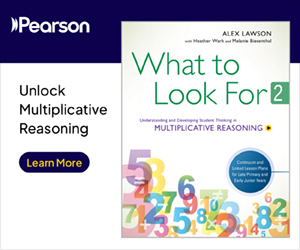Virtual reality (VR) is no longer the exclusive domain of gamers and tech enthusiasts. At York University, it's at the centre of a new study exploring how immersive technology is reshaping the way students and faculty write, collaborate and learn.
The research, led by Rich Shivener, a professor in the Writing Department, and his research colleague Professor Elizabeth Caravella, a scholar of digital rhetoric, was recently published in the peer-reviewed journal Written Communication. Over the course of a year, Shivener and Caravella - both from the Faculty of Liberal Arts & Professional Studies, used headset recordings to document a wide range of writing tasks in virtual and hybrid environments, with the goal of understanding how VR might influence not only what is probable, but what is possible to write.
"Writing has always been intertwined with technology," Caravella says. "As scholars of digital rhetoric, we see virtual reality as the next big step. Technology shapes both what and how we communicate, so it's important to lay the groundwork now."
The study examined how VR environments change the dynamics of invention, collaboration and friction in the writing process. Shivener notes that VR brings a sense of presence to remote collaboration that conventional video calls can't match. "VR makes remote collaborative writing feel much more alive by creating that sense of being physically present together, unlike the flat feeling of staring at Zoom windows," he says.
The research team found that VR platforms allow users to share virtual environments, mark up documents on theatre-sized screens and even inject moments of fun - like tossing virtual popcorn to each other during creativity breaks. These features, they say, can help spark new ideas and keep writers engaged.
But the technology is not without its hurdles. Shivener points to several significant challenges, including hardware limitations such as expensive headsets and tracking issues, as well as software problems like audio failures and display "tearing." Accessibility remains a major concern, particularly for users with mobility or sensory issues.
"Some apps we reviewed do not have options for closed-captioning conversations between avatars," Shivener says. "We need more affordable headsets, writing-specific VR applications and tools that better align with accessibility guidelines, such as providing pre-recorded voice-overs for all text, including menus and installers."
Despite these obstacles, Caravella sees enormous potential for VR in education. She points to studies linking VR use with increased creativity and motivation among students
"VR gives students the ability to see and explore things they might not otherwise experience," she says. "Imagine being able to actually walk someone through your ideas or argument, or to give feedback in real time from anywhere in the world - the implications of this technology in the classroom are infinite."
The findings position York at the forefront of exploring how emerging technologies can enhance teaching, learning and creative collaboration. As VR continues to evolve, Shivener and Caravella hope their work will help ensure that these new spaces are accessible and effective for everyone.
"We need to be thinking now about how to make these spaces work for all students and educators," Shivener says. "The possibilities are just beginning."
Read the full study "Writing in Virtual Reality: Understanding Invention, Collaboration, and Friction in Hybrid Spaces."
This story was originally featured in YFile, York University's community newsletter












